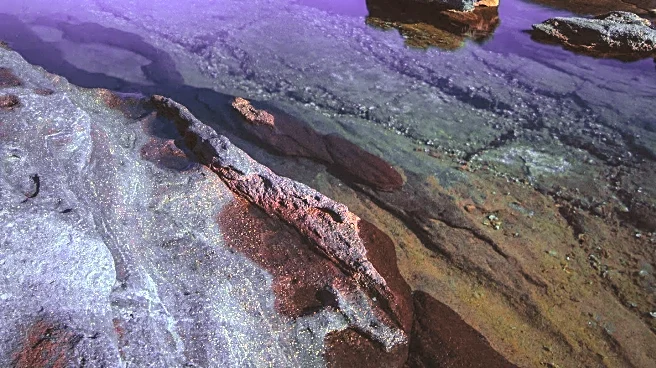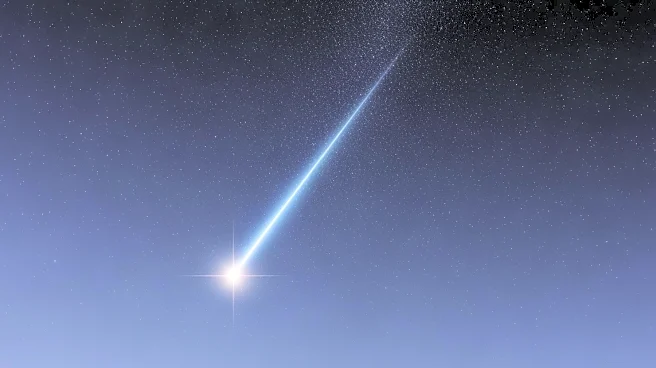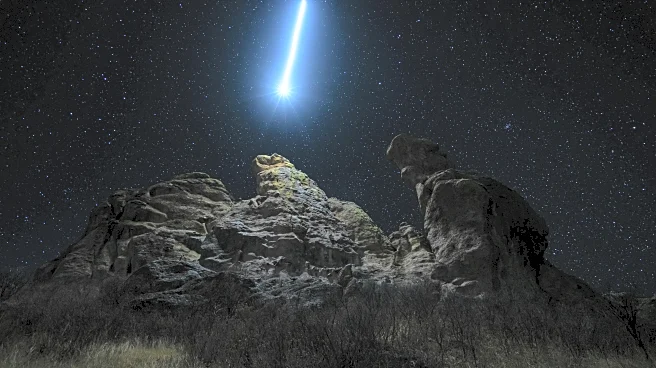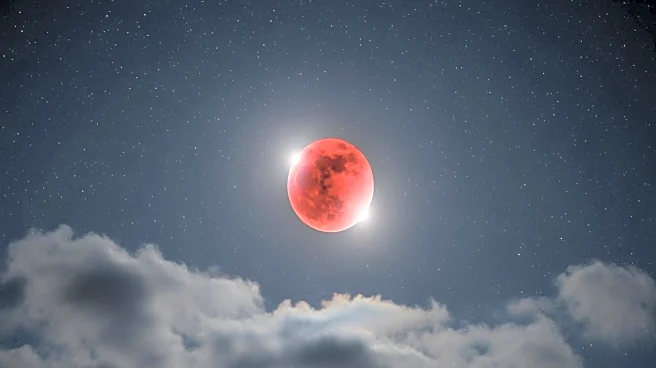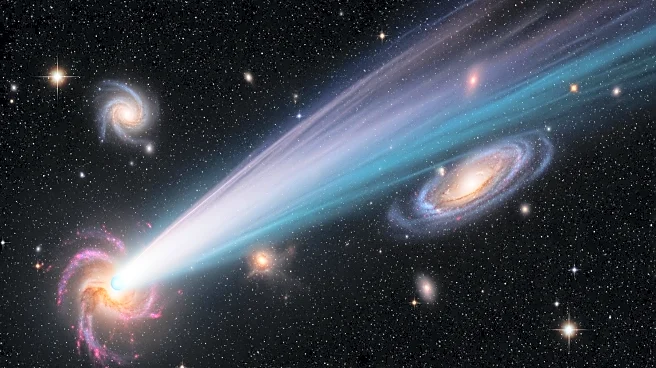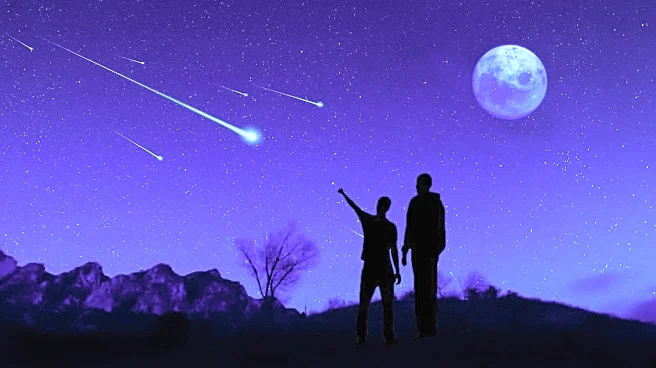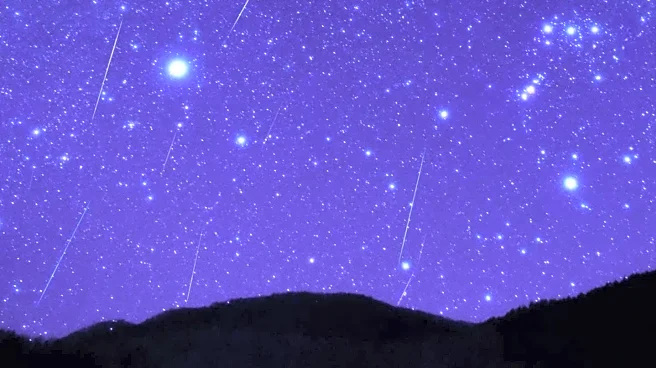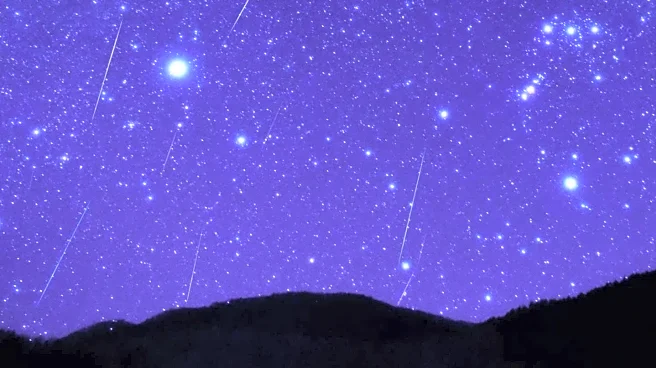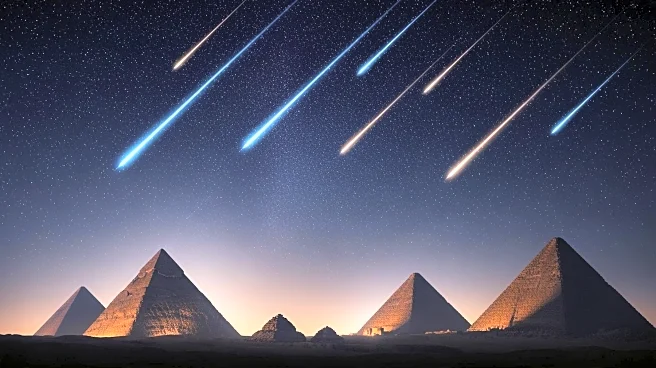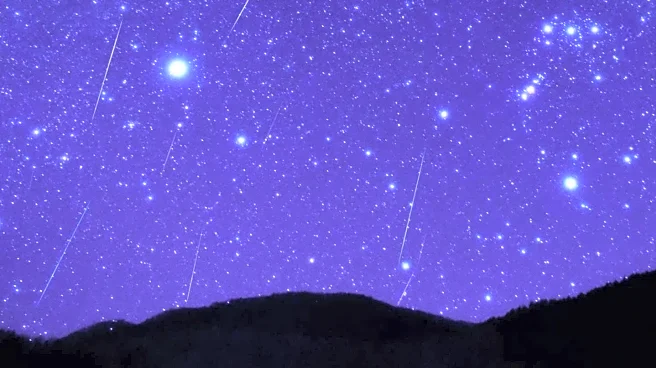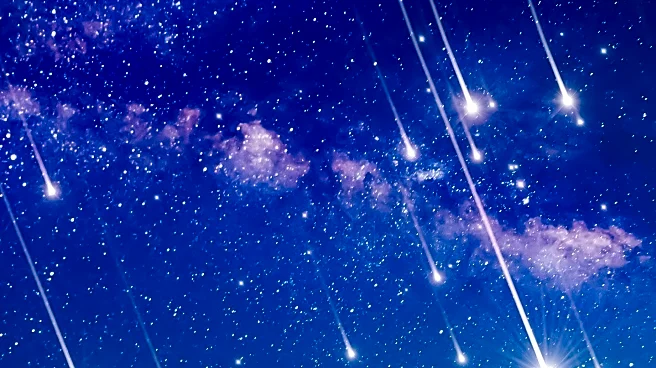What's Happening?
The Southern Taurids meteor shower is set to peak on the evening of November 4 to November 5, offering a spectacular display of bright fireballs. This meteor shower originates from the debris of the comet
2P/Encke, which orbits the Sun every 3.3 years. As Earth passes through this debris trail, the 'comet crumbs' enter the atmosphere and burn up, creating vivid streaks of light across the sky. The Southern Taurids are known for their bright fireballs, making them a notable event for sky watchers. According to NASA, these meteors are visible from almost anywhere on Earth, except Antarctica, with the best viewing times being around midnight.
Why It's Important?
Meteor showers like the Southern Taurids provide a unique opportunity for both amateur and professional astronomers to observe celestial phenomena. These events not only offer a chance to witness the beauty of the night sky but also contribute to scientific understanding of cometary debris and its interaction with Earth's atmosphere. The bright fireballs of the Taurids can be particularly striking, drawing public interest and encouraging educational outreach about astronomy. For communities and individuals, such events can foster a sense of wonder and curiosity about the universe.
What's Next?
Following the Southern Taurids, the Northern Taurids meteor shower is expected to peak on November 11 to November 12. This continuation of celestial events provides further opportunities for observation and study. As these meteor showers occur annually, they also serve as a reminder of the regular and predictable nature of celestial mechanics, offering a consistent subject for ongoing research and public engagement.
Beyond the Headlines
Meteor showers like the Taurids highlight the interconnectedness of our solar system, as debris from distant comets interacts with Earth's atmosphere. This interaction not only creates visual spectacles but also poses questions about the long-term effects of such debris on our planet. Additionally, the cultural significance of meteor showers, often seen as omens or symbols in various traditions, adds a layer of human interest to these astronomical events.
